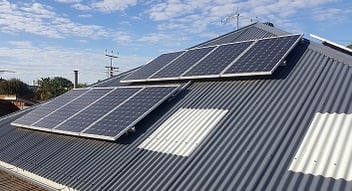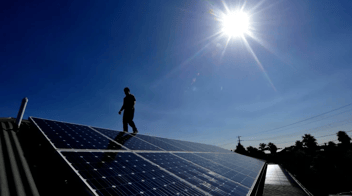What technology best supports solar?
It’s always a buzz word, right? Technology! Let’s take a moment to nerd-out and talk technology in solar power.
Noting that ‘technology’ according to the dictionary simply means the application of scientific knowledge to the industry, which seems a bit basic in this sense. I’ll end up focusing on the more modern and relevant aspects of solar technology these days, and what you can install to make it all work better.
Firstly, the core technology: solar panels, specifically, are photo-voltaic devices that convert PHOTONS (light) into ELECTRONS (electricity). It’s pretty special. There’s plenty on Wikipedia. LINK. In real basic terms, a photon fired from the sun smashes into the solar cell, which is made up of SILICON CRYSTAL. Within this crystal are existing electrons spinning around like they always do, and the light photon knocks one of these out of place, propelling the energy of said electron into your wires! And electricity is created!
Fun fact... SkyGreen's founders, Tanarra, invest heavily in cutting-edge solar panel technology... Perovskite. It's not here yet... watch this space though LINK.
From here, it gets sucked out of the wire by your solar inverter, which in turn converts the ‘DC’ electricity into ‘AC’ electricity for your home and the grid. We take this all for granted. It’s what’s called “grid connected solar” and it’s been around for decades.
But let’s look at what you can do next so far as technology goes.
You can add a battery. Rather than always interface with the grid, a battery will allow much of your solar to be stored for later on, for use within your home in the evening when there’s no sunshine. If you size the system well enough, you will be able to use solar renewable energy for almost 24 hours of your day. That’s pure solar in the daytime, and battery in the night time, with that battery having been charged with the solar. SkyGreen Batteries.
Switchboard level monitoring. It’s most usual for solar systems to have only basic monitoring available, the kind that comes as ‘free wifi’ with your solar inverter. Whilst this is handy to see what your inverter is doing remotely, it’s useless for anything else. A better solution is to monitor what your home switchboard is doing, which gives you access to i) your home’s power consumption and ii) your solar export to the grid. This is essential for you to properly govern your loads. For example, if the sun is out, how much of your home can you actually power for free? Or what if it’s overcast, how much can you power for free? To get this feature, our main offer is SkyVision by edgeConX, which does the whole lot, plus it can monitor up to six of your home internal circuits. This way you even know what your air condition uses. Such monitoring also comes included in all Enphase micro-inverter systems. SkyVision Monitoring.
Electric heat pumps for hot water are the new black. You see, older hot water ‘technology’ is merely a very basic big kettle. Or a kettle with a fire under it, as with a gas storage hot water system. This is technology that could have existed 100 years ago, and as such it is very power hungry and inefficient. Contrast now to a modern heat pump. We’re talking about a high pressure refrigerant compressor and heat exchanger that extracts heat energy from the surrounding air and ‘pumps’ this energy into your water system. The technology can be tricky to understand, but that’s the gist of it. By using heat energy transfer, these hot water systems use around five times less energy to heat water. Because of this, they can be run 100% with your solar power, and for the first time ever you can get truly free hot water from the sun, because the good ones work even in the winter. Even solar hot water tubes don’t work in winter. SkyGreen Electric Heat Pumps.
(Isn’t it too cold in the winter? No, there is always energy in the air, noting that ‘absolute zero’ is -273 deg, and a good heat pump can make use of this).
.png?width=1514&height=370&name=SkyGreen_Logo%20(2).png)


